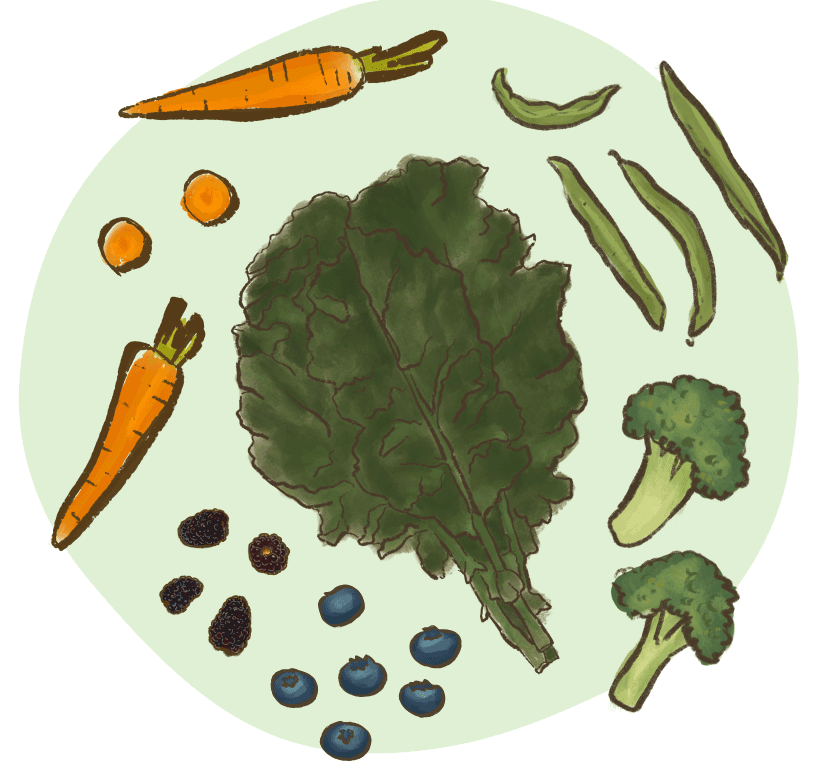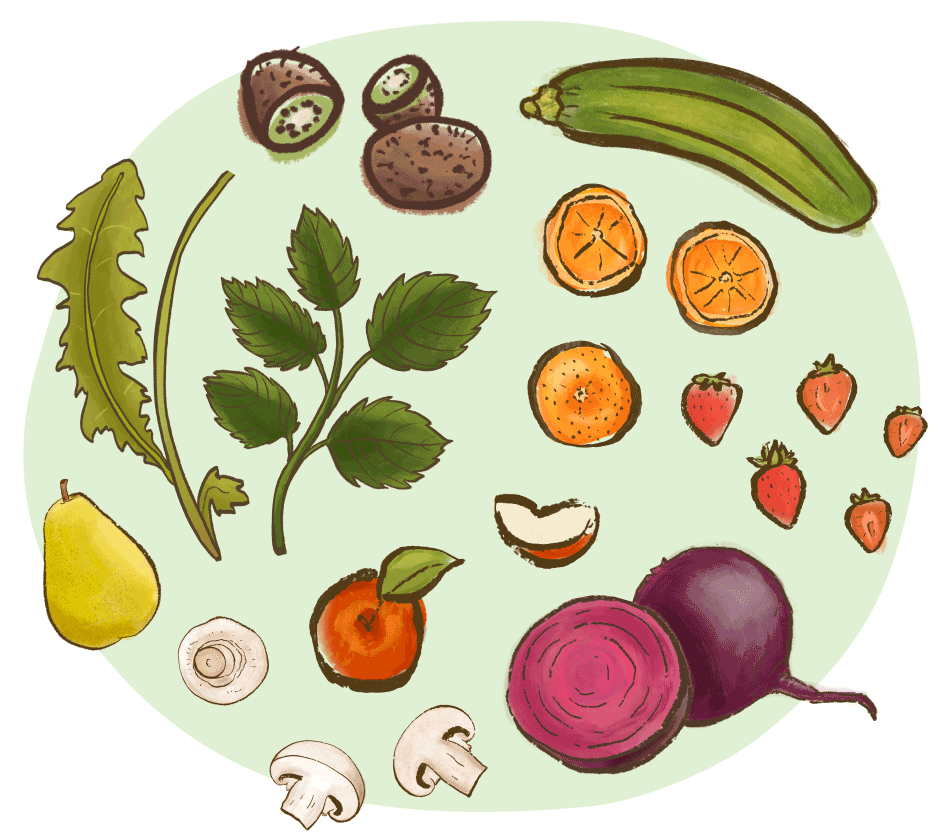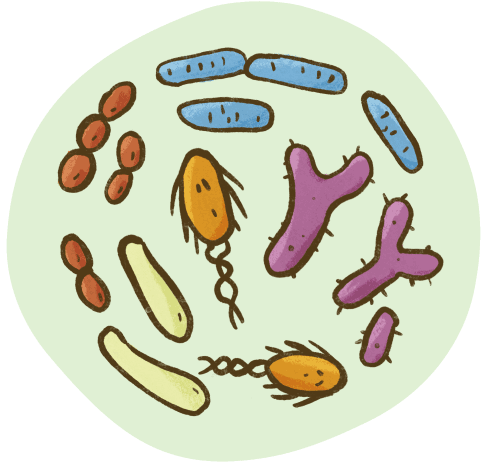Caring for a senior dog

by Narelle Cooke, Canine Nutritionist.

As our dogs age, they become an inseparable part of our families and our loyal companions, and we want nothing but the best for them. But how do we ensure that they age gracefully and enjoy their golden years to the fullest? How do we feed our senior dogs?
While there are several things we can do to help our senior dogs age well, in this article I’ll focus on one critical aspect - their diet. Proper nutrition is the foundation of health and plays a vital role in promoting wellbeing and reducing the risk of chronic disease. As pet owners, we have easy control over our dog's food, and even small adjustments can make a significant difference. So, let’s dive in on all you need to know about senior dog food.
Protein

Protein is arguably the most important nutrient in your senior dog’s diet. In fact, diets that highly restrict protein are likely to accelerate muscle loss, which is highly detrimental and the last thing that our senior dogs need.1 As older dogs are more susceptible to physical injuries and more likely to undergo surgical procedures, ensuring adequate dietary protein intake is essential for the repair of damaged tissues, promoting healing and recovery, and supporting the function of the immune system.2
Animal protein sources, such as muscle meats, organ meats, fish, eggs, and dairy, are considered complete protein sources because they contain all the essential amino acids that our dogs require. In contrast, plant-based protein sources, such as grains and legumes, often lack one or more of these essential amino acids,3, 4 making high-quality animal proteins an essential component of every senior dog's diet.
Carbohydrates

There is growing evidence that the type of carbohydrate consumed is important in relation to metabolic disease risk.5-7 Fruits and vegetables, particularly those such as berries and leafy greens, provide our dogs with a great source of low glycaemic carbohydrates that can reduce post-prandial (the period after eating) glucose and insulin levels.8 This is an important dietary strategy for reducing the incidence of diabetes and associated health complications that are becoming more prevalent in our older dogs. 9, 10 Cereal grains, such as wheat, rice and corn, that have been highly processed during the kibble making process, are known to trigger rapid alterations in glucose and insulin levels.11, 12 Studies have also shown that highly processed and heat-treated grains have an inflammatory effect in our dogs and act to increase markers of oxidative and metabolic stress.12, 13 Unfortunately, low-grade inflammation is often not apparent in the short term, but when foods that trigger inflammation are fed over a period of years, that’s when we see an increase in degenerative diseases, including cancer.12
The value of plants

Reduced immune system function is often seen in senior pets, increasing the risk for infection and disease development. As such, providing our senior dogs with foods rich in antioxidants and phytonutrients can make a significant difference to their overall quality of life.
Phytonutrients are natural compounds found exclusively in plants and are responsible for the vibrant colours of fruits and vegetables. In recent years, research has shown that dietary phytonutrients play a significant role in promoting health and preventing chronic diseases. While phytonutrients are not essential to keep your dog alive like fats, proteins, vitamins, and minerals, they can provide protection against oxidative stress, inflammation, vascular dysfunction, and metabolic dysregulation. This protection reduces the risk factors for a range of different disease states, including obesity, diabetes, cardiovascular and neurological diseases, and certain types of cancer. Phytonutrients also enhance immunity, intercellular communication, repair DNA damage, detoxify carcinogens, and improve cognitive function.14-16
The brain is extremely vulnerable to oxidative damage, causing the death of neurons and resulting in reduced cognitive function and changes in behaviour.17 Senior dogs often display symptoms of canine cognitive dysfunction such as impaired learning and memory, increased anxiety, disorientation, house soiling, lethargy and disturbances in sleep patterns.18 Feeding senior dogs a diet rich in antioxidants from a mixture of fruits and vegetables has been shown to counteract the effects of free radical damage on the brain, leading to decreased rates of cognitive decline as they aged and improved age-related behavioural changes.19-21
Examples of fruits and vegetables that are particularly beneficial for senior dogs include - broccoli, green beans, carrots, mushrooms, beetroot, Dandelion greens, Asian greens, fresh herbs, zucchini, leafy greens, blueberries, strawberries, kiwi fruit, apples, pears, oranges – just to name a few!
Fibre

Fibre is a type of carbohydrate that is not broken down or absorbed by the body. Instead, it passes through the digestive system mostly intact. Although dogs do not have a dietary requirement for fibre, including certain sources of fibre in their diet can provide various health benefits. For example, fibre plays an important role in promoting healthy digestion and bowel regularity. It can also help regulate blood sugar levels, as it slows down the absorption of glucose from the intestines into the bloodstream. This is particularly important for senior dogs who may be at a higher risk of developing diabetes. Furthermore, certain types of fibre can help promote the growth of beneficial bacteria in the gut, which can improve overall gut health and support a strong immune system.
One of my favourite fibres for all dogs, but particularly our senior dogs, is psyllium. Psyllium husks are great for relieving both constipation and mild-to-moderate diarrhoea, supporting healthy anal gland function, as well as helping dogs on a weight loss program feel fuller for longer. Psyllium is an excellent addition to senior dog food.
Good fats

Most commercial kibbles contain significant amounts of vegetable oils such as safflower, sunflower, canola, and soybean oil, leading to an imbalance in the ratio of omega-6 to omega-3 fatty acids in our dog's diet. This skewed ratio can contribute to chronic inflammation and oxidative stress, known to be associated with a range of health problems in dogs, and to negatively impact lifespan.22, 23 On the other hand, fresh whole-food diets that include oily fish like salmon, provide an abundant source of omega-3 fatty acids, specifically eicosapentaenoic acid (EPA) and docosahexaenoic acid (DHA), which have potent anti-inflammatory properties. These fatty acids not only play a critical role in maintaining a healthy immune system, but also help reduce the risk of various chronic diseases in dogs.24-26 This is particularly important for our senior dogs, as they are more prone to inflammatory conditions such as arthritis. The anti-inflammatory effects of high-quality omega-3 fats can support joint health in our older dogs, as well as help to manage the pain and inflammation associated with arthritic conditions. Look for good sources of omegas in your senior dog food.
Probiotics

As dogs age, their microbiome (the community of microorganisms living in their gut), tends to become less diverse.27, 28 Studies have shown that reduced bacterial diversity in the gut is linked to a range of health issues in dogs, including gastrointestinal dysbiosis, intestinal inflammation, and weakened immune function.28 However, research has also shown that a fresh whole-food diet, in contrast to a kibble diet, can promote increased bacterial diversity in the gut.29-32 By providing your senior dog with a diet rich in fresh, whole foods, you may be able to help maintain a healthy and diverse microbiome, which can in turn support overall health and well-being.
Another way to support the microbiome of our senior dogs is to supplement them with a high-strength multi-strain probiotic. Studies show that supporting our dogs with probiotics can help to: 33-42
- Aid digestion
- Support the immune system
- Reduce gastrointestinal issues
- Reduce allergic symptoms
- Promote nutrient production
- Enhance nutrient absorption
- Support skin health
- Positively influence mood and stress-related behaviours
Calories

Senior dogs tend to have a slower metabolism, which is why many dogs tend to gain weight as they age. Obesity shortens a dog’s life and makes them more likely to develop a range of different diseases, including diabetes, osteoarthritis and cancer.43 In these instances, decreasing the number of calories eaten (either by feeding less or changing to a food with a lower energy density) will help to prevent weight gain. My concern, however, with feeding less food is that our senior dogs will then also receive less of the essential nutrients that they need to support healthy ageing. A better option, in my opinion, is to feed leaner cuts of meats such as kangaroo, goat or turkey, which will continue to provide them with a high-quality protein source full of all of the essential vitamins, minerals and amino acids that they need, while still supporting healthy body weight.
Final remarks
Proper nutrition is a cornerstone of senior dog care and plays a pivotal role in supporting overall wellbeing. Incorporating high-quality animal protein sources in their diet can help promote a strong immune system and better overall body function. Additionally, adding in omega-3 fatty acids from oily fish like salmon can have potent anti-inflammatory effects in the body. Supplementing probiotics can also be beneficial for maintaining a healthy gut microbiome and immune system function. Furthermore, the addition of phytonutrient-rich plant matter can reduce the overall risk of disease development, including cancer, and go a long way to ensuring a good quality of life in their golden years.

The Big Dog raw food recipe, Wellbeing, was specially formulated to tend to senior dog food needs. It contains all the ingredients that will help your senior dog thrive. Check out healthy senior dog food by Big Dog Pet Foods.
About the Author - Narelle Cooke, Canine Nutritionist.

Narelle is a clinical Naturopath, Nutritionist and Herbalist for both people and pets, and operates her wellness clinic ‘Natural Health and Nutrition’ in Dural, Sydney.
Being a lifelong dog-owner and currently meeting the demands of three French Bulldogs, two German Shepherds and a Burmese cat, Narelle is as passionate about the health and wellbeing of our pets as she is about their owners. And it was this strong desire to see her own pets live their longest and best lives that led her to hours of personal research and additional study in the area of natural animal health and nutrition.
· Bachelor of Health Science(Naturopathy) (ACNT)
· Bachelor of Agricultural Science (honours) (The University of Melbourne)
· Advanced Diploma of Naturopathy (AIAS)
· Advanced Diploma of Nutritional Medicine (AIAS)
· Advanced Diploma of Western Herbal Medicine (AIAS)
· Certificate III in Dog Behaviour and Training (NDTF)
· Certificate in Natural Animal Nutrition (CIVT)
· Certificate in Animal Health Sciences (CIVT)
· Certificate in Animal Nutrition (HATO)
If you liked this article, subscribe to our Big Dog Fam Mail to receive more great pet health and happiness advice.
If you liked this article, please share on Facebook.
